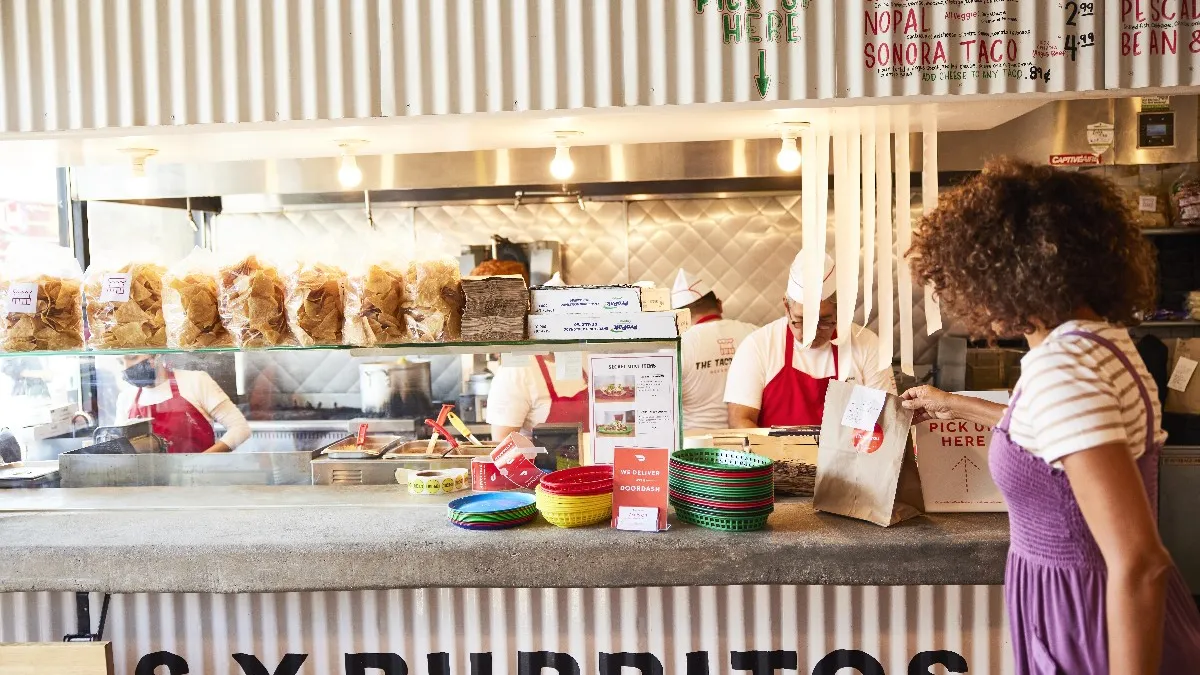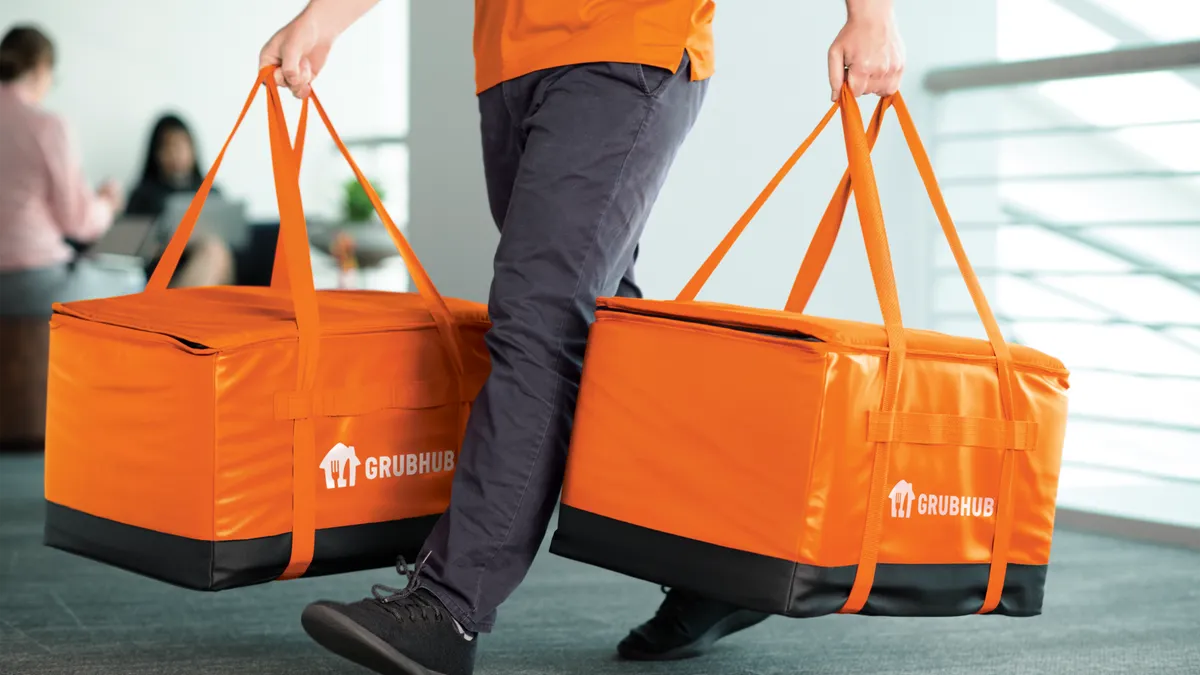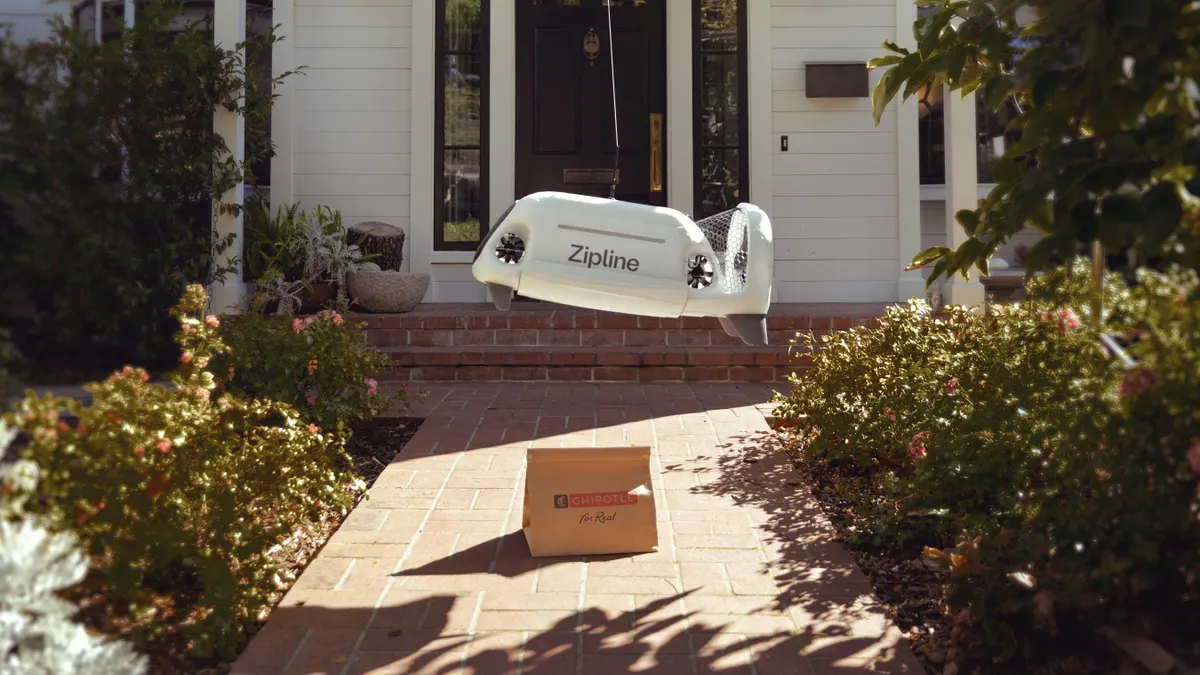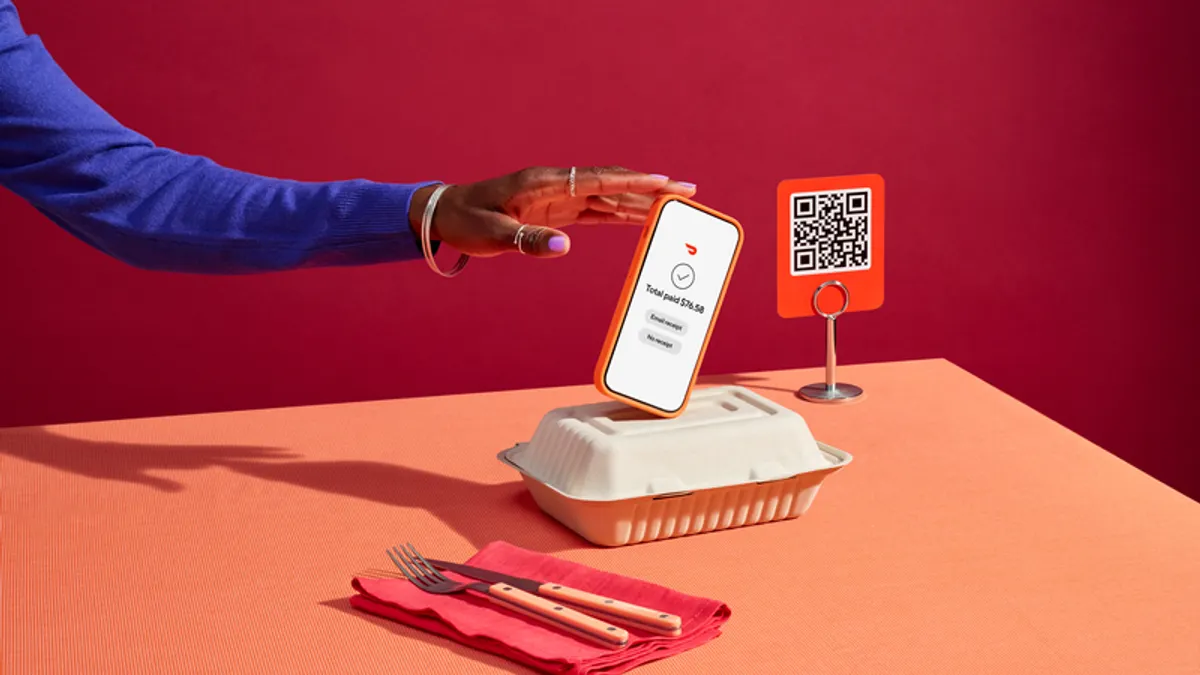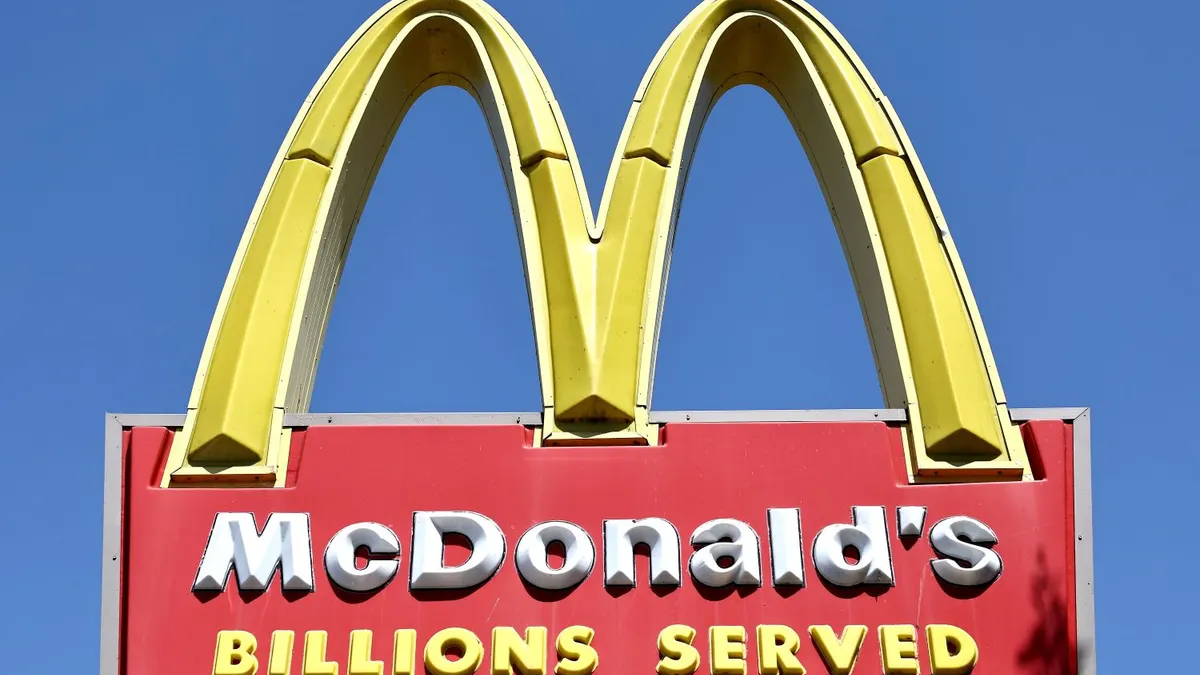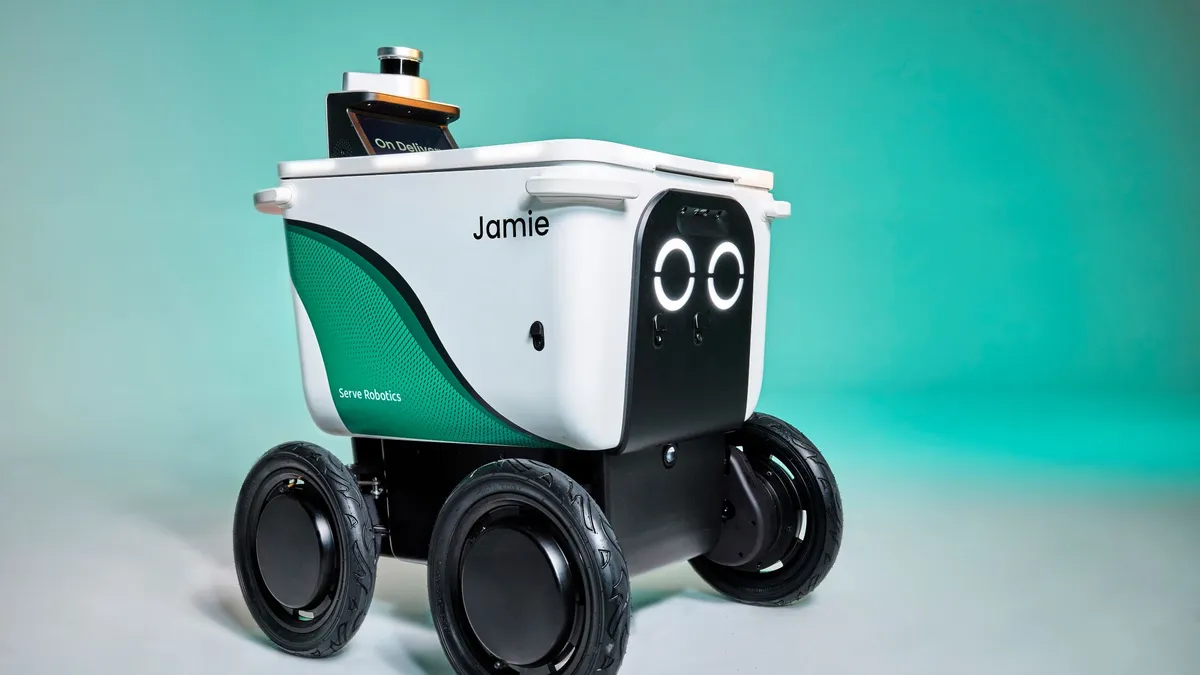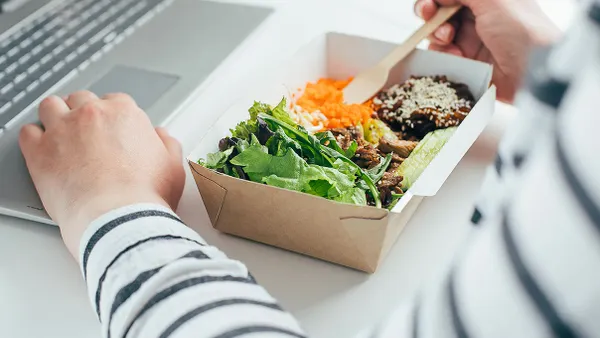This article is the first in a three-part series exploring how DoorDash has become the dominant third-party delivery aggregator in the U.S.
Mistie Boulton, CEO of Palo Alto, California-based restaurant Oren’s Hummus, is used to seeing young professionals and students pitch inventions. Her partner, Oren Dobronsky, is known as a Silicon Valley angel investor and has four successful startups. People come into the restaurant to pitch the latest and greatest invention, and Boulton acts like Dobronksy’s guard dog, looking at different concepts and letting him know if they should participate, she said.
When DoorDash co-founders Tony Xu, Andy Fang and Stanley Tang first reached out to Boulton to pitch their delivery product in 2013, she noticed something a bit different about their approach.
“Tony [and the co-founders] really listened. [They] authentically were sincere and wanted to hear what [they] can do better,” she said. “That was the biggest thing for me. It’s just this raw passion with purpose and partnership.”
Oren’s Hummus partnered with DoorDash that same year and continues to work with the platform to this day, along with other top third-party aggregators. But Boulton argues “nobody has the level of partnership that DoorDash has.”
Boulton, who also is president and founder of restaurant consulting firm EyeSpy, has seen a lot of different companies that have great ideas for operators and are really attentive to their customers for the first year or two, but then just communicate with their clients via bulk email, she said.
“That’s not the case at all with DoorDash. I have people [from DoorDash] who reach out on a regular basis who care about my business,” Boulton said.
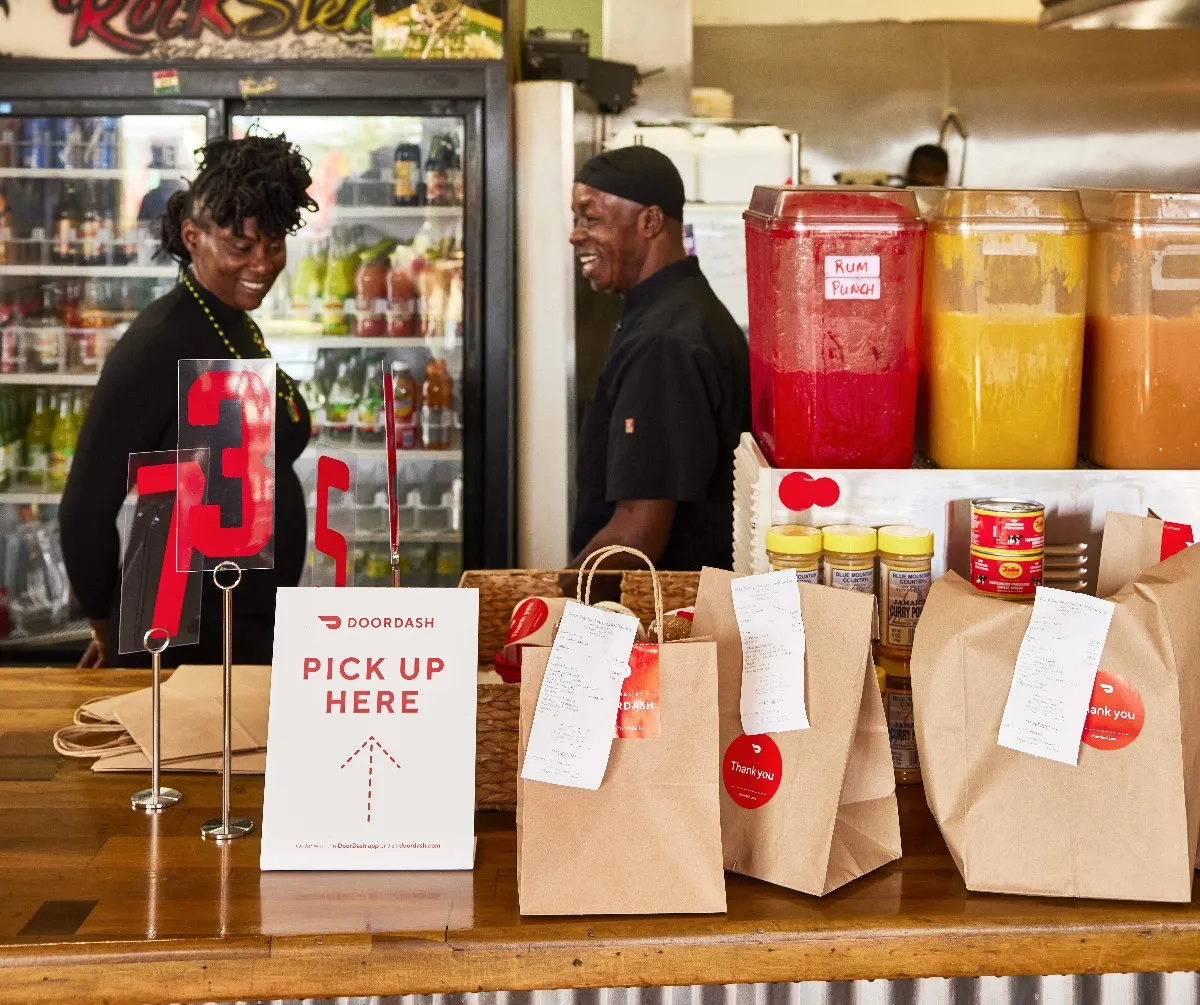
From backyard to nationwide delivery
When the DoorDash co-founders met at Stanford University in 2012, they all wanted to do something significant to help local businesses, said DoorDash co-founder and Chief Technology Officer Andy Fang. Tony Xu grew up working with his mom in a local restaurant, an experience that gave the co-founders some insight into the industry’s needs.
While evaluating what type of business to launch, Tang, Fang and Xu considered delivery when they learned a local macaroon shop had to cancel a bunch of delivery orders because they didn’t have enough staff to fulfill them.
“That was kind of a light bulb moment for us,” Fang said. “We realized that there could be something here around helping build logistics for local merchants to help them facilitate delivery.”
The founders created PaloAltoDelivery.com in 2013 to provide delivery services to local merchants in the Bay Area. Months later, they rebranded the platform as DoorDash. The founders performed the first 100 restaurant deliveries themselves, and learned a lot about the pickup process, parking, and other issues that came up.
“I think the biggest question that we got and the one we asked ourselves is ‘is this something that customers even want?’” Fang said. “Because if we could figure out the answer to that question, then we knew that we could definitely provide a way to help merchants grow their sales and increase their presence online.”
The founders got their answer quickly. Upon launching, they received their first delivery order in 45 minutes, which was completely unexpected, Fang said.
But sustaining this early momentum wasn’t easy. To get drivers, the company posted on local job boards at Stanford, recruiting students to help out. The delivery system was very informal, with the founders texting drivers restaurant orders and using Apple’s Find My Friends tool to connect drivers with the closest restaurants, Fang said.
DoorDash expanded to San Jose in its early years, which was still close enough to the company’s home base in Palo Alto to monitor deliveries. But once the businesses extended to Los Angeles and elsewhere, oversight became a bigger challenge. The founders realized that to be successful, a delivery platform would require a local sales team, merchant partners and customers in each zip code, Fang said.
That strategy has paid off — the company has been on a growth tear over the past five years. It reached 50 states in 2019, went public in 2020 and has a market capitalization of over $21 billion as of November. DoorDash currently operates in over 7,000 cities in the U.S., Canada, Australia, Japan and Germany.
“I don’t think we thought that it would ever get as big as it did as quickly as it did,” Fang said. “We knew we wanted to be something much grander than just a kind of backyard delivery shop in Palo Alto. Scaling out to the entire country and even to other countries today, and to deliver other types of goods, is something that I think is stepping into the role that we think we can play to help Americans of all types doing business in an increasingly online world.”
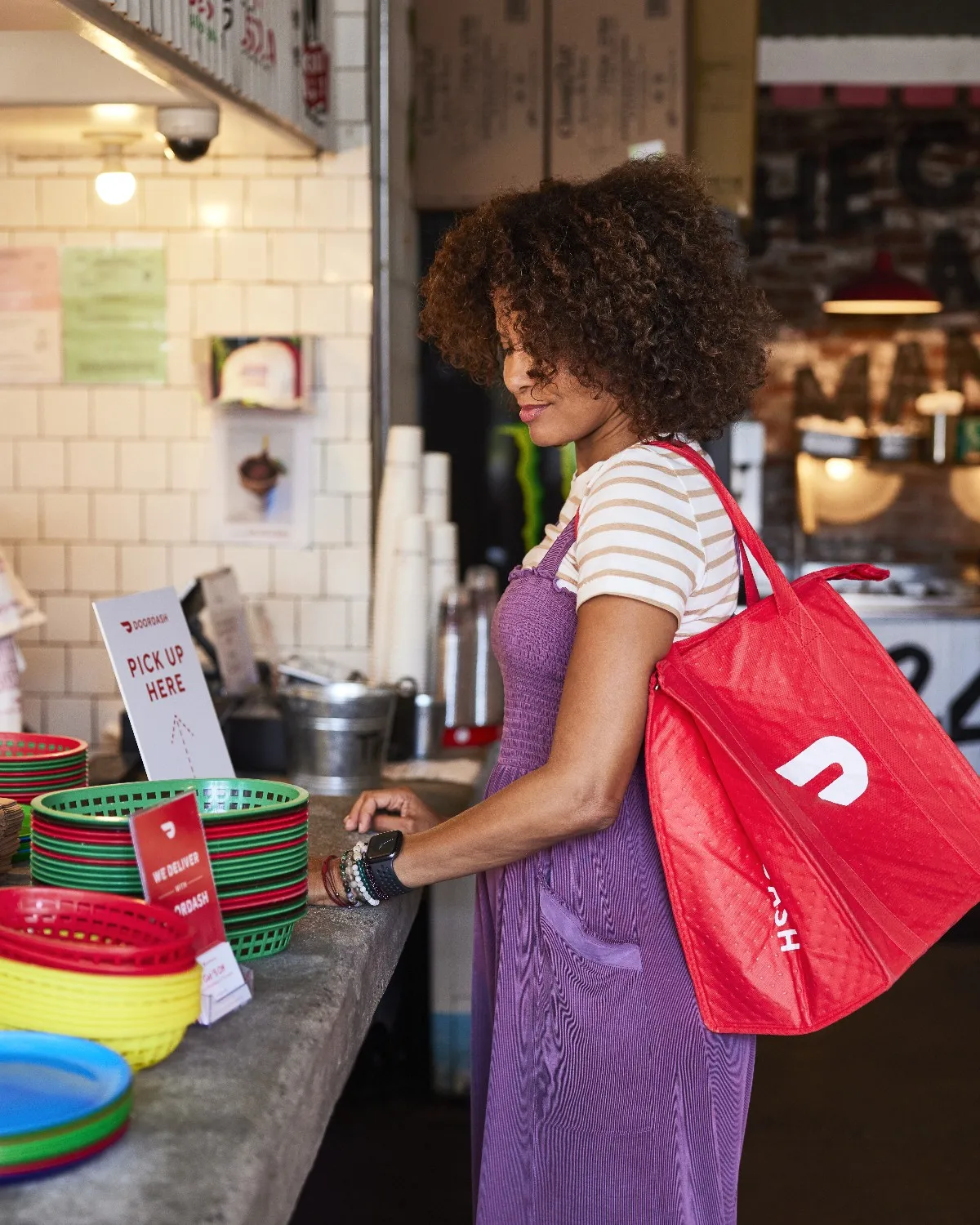
Maintaining communication with restaurants
DoorDash created a structure to ensure that restaurant partners have someone to talk to about concerns and can provide feedback to the company. A lot of that communication is facilitated by local account representatives who reach out to restaurant clients. The company also created its Restaurant Advisory Council in 2020, which provides a forum for restaurant owners and operators to tell DoorDash what’s working and what’s not, said Tom Pickett, DoorDash’s chief revenue officer.
In 2021, the company appointed its first chief restaurant advisor, Stephanie Izard, a move that strengthened DoorDash’s connection with its partners. Izard was interested in the support model DoorDash offers and was helpful in expanding the Merchant Experience Partners, Pickett said. Historically, operators often said they felt a little lost within DoorDash’s system, especially as it got bigger, and didn’t know who to specifically talk to. Merchant Experience Partners are specific contacts for the restaurant, which can ask them questions about financials, menu updates and account settings, according to DoorDash’s website. The Merchant Experience Partners team has helped increase support and engagement, Pickett said.
“Those interactions happen on a daily basis. … Now we have an account management structure where either you have an account manager or a Merchant Experience Partner or both,” Pickett said. “I think that has been very impactful in terms of getting feedback. [It’s] a two-way dialogue with our restaurants.”
Boulton’s DoorDash representative often asks questions about how DoorDash can help, what her restaurant needs and what information the company might be able to provide to help grow a location, she said. The DoorDash rep also shares promotions that could benefit Oren’s Hummus, or ideas to navigate specific challenges.
One of Oren’s Hummus’s challenges was handling a high volume of to-go orders, which make up about 45% of orders at each of its locations, without overburdening the employees who had to input orders into the point-of-sales system. DoorDash worked with the restaurant to integrate with POS companies Aloha and Toast to make order processing easier, Boulton said.
Monthly or quarterly meetings with DoorDash have been beneficial, as the company can share data on how diners have responded to menu items, as well as data on any timing and food issues that have cropped up, Boulton said. DoorDash also shares marketing campaign ideas with their restaurant partners, and Boulton said the company’s insights have helped advise her on potential new locations. While Oren’s Hummus hasn’t used that insight specifically for opening a new restaurant, the company is always considering expansion opportunities.
Oren’s Hummus Los Gatos, California, location was struggling, but Boulton spoke with DoorDash to figure out a way to attract more customers. That conversation led Oren’s to create 15,000 mailers that would go out within a six-mile radius of the restaurant to encourage people to come in. That mailer has been implemented and tested throughout November and includes a discount for DoorDash as well as a complimentary item in the restaurant. This promotion will run through the end of the year.
DoorDash also helped Oren’s Hummus when its liquor license was threatened after a third-party delivery aggregator delivered alcohol to an underaged customer. The California Department of Alcoholic Beverage Control had contacted Boulton in the past to inform her if another third-party company delivered liquor to a minor, she would lose her alcohol license. Boulton turned to DoorDash and the company soon implemented a secret shopper program to ensure that people were being carded appropriately.
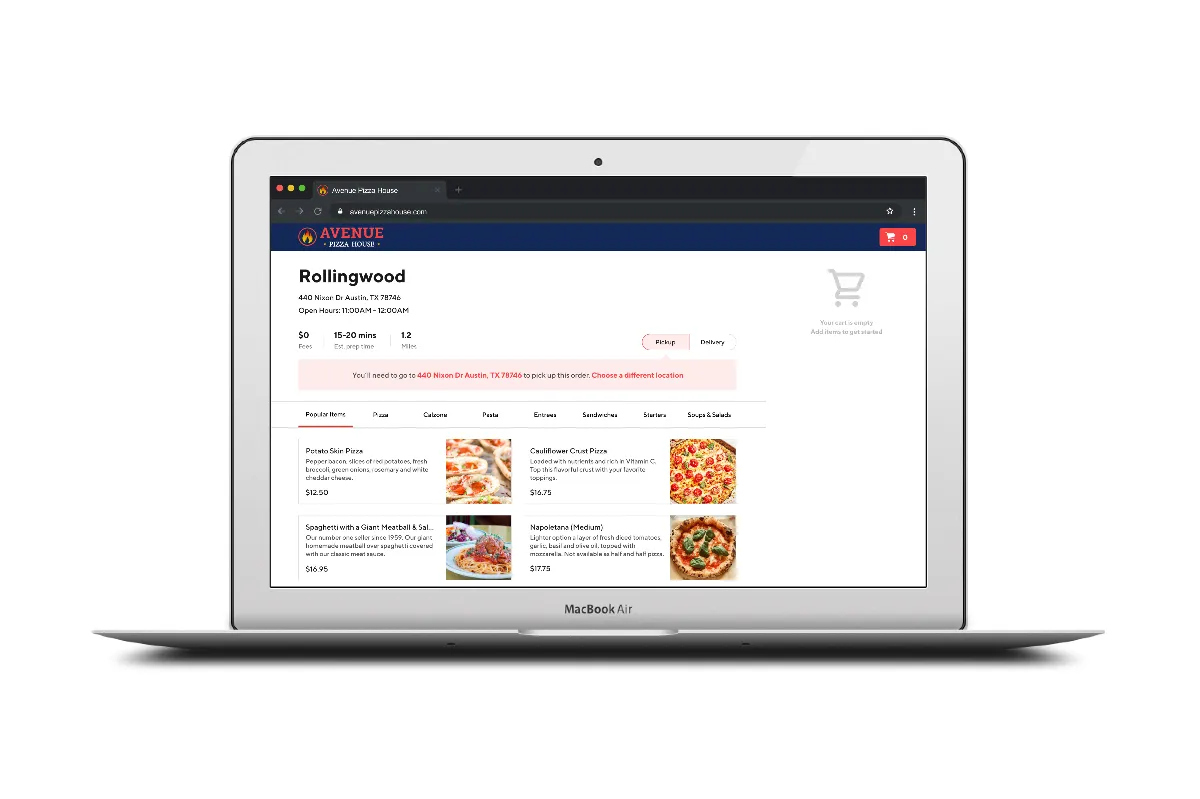
How feedback led to product changes
This ongoing communication is key to DoorDash’s product development, and to meeting merchants’ needs, Pickett said.
“We’ve become the category leader in restaurant in large part because of the collaborative relationships with our restaurateurs that [have] helped us build the leading selection, which has driven customer demand, which has allowed us to build the largest Dasher fleet, which has allowed us to increase the quality and speed of delivery,” Pickett said.
DoorDash is always looking at data to help drive company decisions and tries to operate at the most granular level of detail to figure out how to drive growth not only for its business, but also for restaurant partners, Fang said.
DoorDash focuses on merchant needs and considers itself a “merchant-first company,” Pickett said.
“We always go back to what do restaurants need to be successful? And usually that comes down to new customers and revenue growth. That’s what we’ve been able to unlock with delivery as the primary use case. But we continue to look for new opportunities with our restaurant partners,” Pickett said.
Historically, DoorDash had a one-size-fits all model with a 30%-per-order commission. But after hearing from account managers and its Restaurant Advisory Council, it created a multi-tier commission structure in 2021 to allow merchants to pick the products they want. This decision also came after several municipalities implemented caps on commissions during the height of the pandemic restrictions. Its 15% commission tier provides a basic delivery service, while the 25% and 30% tiers provide access to high-frequency DashPass customers and tools to drive more demand from consumers, Pickett said.
DoorDash’s pickup product was also born out of discussions with merchants who were looking for ways to allow customers to order ahead and pick up food themselves, Fang said.
During the pandemic, DoorDash realized 40% of small and medium businesses lacked an online ordering system. DoorDash rolled out a Storefront product in 2020 allowing restaurants to build turnkey websites with online ordering capabilities for which it charges 0% commissions. Storefront has been a win for Oren’s Hummus, Boulton said.
“Moving to Storefront immediately opened up so many more orders, and orders increased dramatically,” she said, adding that this shrunk costs dramatically for the restaurant.
Storefront makes it possible for a broader swath of restaurants to afford DoorDash’s delivery system, Boulton said, adding that she doesn’t think a lot of restaurants are aware of the offering.
“I think that’s going to be a big movement with delivery as a whole compared to any other company. I don’t hear [of a] Storefront or a system similar to that in any way from any other delivery company. I think that there is this high advantage in staying above the mark … with DoorDash by having that type of service.”
DoorDash will continue to invest more in its products for restaurants, such as customer insights, so that restaurants can better understand DoorDash customers and then use add-ons like ads and promotions to target a particular subset of customers on the platform, Pickett said. The company started selling ad spaces in October 2021, allowing restaurants to pay for ads that appear above search results. DoorDash expects to have more opportunities to grow in this area, Pickett said.
“There’s still a lot of runway for us and our core restaurant business,” Fang said. “We’ve only scratched the surface in terms of the households we’ve touched in America, which are less than 20% of households on a monthly basis. We also capture less than 6% of the total restaurant spend today.”
Correction: A previous version of this article misstated when DoorDash went public and when its Restaurant Advisory Council first convened. DoorDash went public and the council first convened in 2020. The prior version also misspelled chef Stephanie Izard’s name and incorrectly identified the CEO of Oren’s Hummus. The CEO of Oren’s Hummus is Mistie Boulton.



